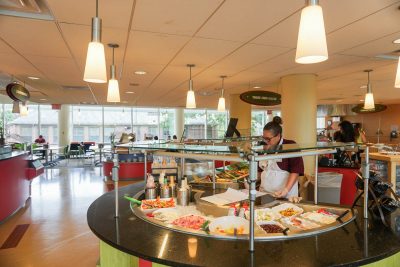
Nearly a month into the fall semester, new and former Wheelock students alike are settling into Boston University’s newly christened Fenway Campus.
Transfer students and former Wheelock College students now attending BU as part of the Wheelock-BU merger make up most of the population residing in these dormitories, BU spokesperson Colin Riley wrote in an email. Still, all BU students are welcome to move into the residence halls in Fenway.
Of the 207 former Wheelock students in BU housing, 91 live on the Fenway Campus, Riley wrote, including 10 students who are currently attending Simmons University. Other residents include transfer students and students in the Metropolitan College and the Center for English Language and Orientation Programs.
The Simmons students remain as part of an agreement between Simmons and BU, Riley said in an interview. As BU does not offer an undergraduate social work program, former Wheelock students within the major will finish their course load at Simmons.
Meghan Robbins, a former Wheelock student living on the Fenway Campus who is now a senior at Simmons, said the shift has been frustrating for her.
“I’m like a split student,” said Robbins, “I don’t have classes [at Boston University], but I live here.”
BU students living at the Fenway Campus now live nearly a mile from their classes at BU’s Charles River Campus.
Elizabeth Klayman, a sophomore transfer student in the College of Fine Arts, said she maintains a sense of school spirit, even at a distance.
“I do feel like I’m a part of BU,” Klayman said. “Just because so many people want to be over here … I just walk up to Target and see so many people wearing BU sweatshirts.”
However, travel poses a problem, Klayman said.
Mark Tony, a sophomore transfer student in the College of Engineering, said he mostly walks to his classes, as the shuttle to the Charles River Campus takes 15 minutes, with an additional walk afterward.
“I’ve used the bus twice,” Tony said. “It doesn’t save any time. … I mean walking when the weather is nice isn’t terrible … but now it’s getting cold.”
While Wheelock College’s small size made getting to class easy, transportation is now more difficult for students requiring disability accommodations, said Alyssa Sachs, a junior and former Wheelock student in the new Wheelock College of Education and Human Development.
“Wheelock was a really small school,” Sachs said, “so students within that population chose it thinking they could access classes easily.”
The BU Shuttle does help, Sachs said, although she said she has heard it is unreliable.
The merger has created a new financial burden for former Wheelock students integrating into BU residential life as well, students said.
Kadeem Apply, a former Wheelock senior now in WED, said that while BU had said that the school would honor previous tuition rates and aid packages, students’ tuition has still increased.
“It was not what they intended to be,” Apply said. “They tried to do a lot of adjustments with the grants and everything, but we never really got them. And either way, you came out with more [to pay] than expected.”
The administration remains optimistic about the merger, Riley said, and is satisfied with its ability to accommodate students.
“We’re very pleased that we’re able to offer these educational opportunities, and … fully merge the Wheelock students into the university programs,” Riley said.
The merger has taken a toll on former Wheelock students, Darcy Dubois, special assistant to the dean of students and former residence life director at Wheelock, wrote in an email.
“This merger has not been easy on many of us- physically or mentally,” Dubois wrote. “It has been a very long and emotionally draining experience for the entire Wheelock community, but most importantly, the students. It was a long year of sadness, anxiety, and questions with many unknown answers.”
The merger was a “very personal journey,” Dubois wrote.
“… Everyone is transitioning at their own pace,” Dubois wrote. “We were all very lucky to have the leadership that we did … from both communities to ensure that this was a merger that put the students in the center of their decision-making.”


